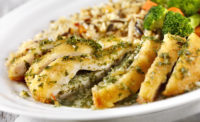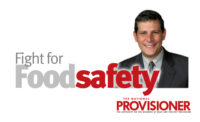As we all know, the USDA is tasked with the mandate of ensuring the safety and quality of meat products produced and sold in the United States. One of the ways the agency has historically regulated safety is by declaring (sometimes at unexpected times or without warning) certain pathogens to be adulterants. Since the USDA’s decision to characterize the “Big-Six” non-O157 STEC serogroups as adulterants, there has been a long-running question regarding whether USDA will take additional steps in the future to declare Salmonella as an adulterant in raw animal products and, if so, to what extent.
USDA and the industry have long collaborated toward reducing the incidence of Salmonella in meat products. Increased testing, improved sanitation practices, and enhanced monitoring, along with more stringent regulatory standards and expectations have all helped to reduce the occurrence of Salmonella. Despite these efforts, we see USDA stating more frequently that Salmonella remains a significant concern. According to CDC, Salmonella remains one of the leading causes of foodborne illness, with an estimated number of annual illnesses exceeding 1 million.
In August 2022, USDA announced its intention to declare Salmonella an adulterant in breaded and stuffed raw chicken products. Sandra Eskin, USDA deputy undersecretary for food safety, said the “announcement is an important moment in U.S. food safety because we are declaring Salmonella an adulterant in a raw poultry product.” She stated further that initiative represents “just the beginning of our efforts to improve public health.”
These statements could be interpreted in a number of ways, one of which is that additional raw poultry products could possibly be considered in the future for inclusion on the list. How quickly all of this occurs, however, remains to be seen. Additionally, with a new presidential election cycle beginning, federal agencies may become increasingly reluctant to press forward in the near-term with significant new policy pronouncements.
If USDA were to deem Salmonella as an adulterant in one or more products, it would likely have significant implications for the poultry industry. For starters, producers would likely be required to develop and implement additional food safety measures to reduce contamination and ensure compliance.
Many who oppose such a declaration contend that Salmonella is a naturally occurring organism that may be introduced, and thus be present, in many types of raw animal products, including chicken, eggs, and others, through a wide range of possible vehicles. In turn, they argue that Salmonella is more effectively controlled, as it always has been, through additional scientific research, proper sanitation, and proper handling and cooking, as opposed to a governmental mandate. Moreover, they argue, a significant regulatory shift such as this could lead to an unneeded increase in the total numbers of recalls and economic losses for farmers and food producers. Instead, implementing more effective regulations, they argue, investing in improved science and better education for consumers to observe safe-handling practices would result in a more effective control of Salmonella.
We’ll see where USDA ultimately lands on the Salmonella issue. With that said, one thing is certain: USDA will continue to tighten – not soften – existing food safety rules and regulations. As a result, USDA’s anticipated action of declaring Salmonella to be an “adulterant” in some or all raw poultry products will likely be staying on the table.





Report Abusive Comment